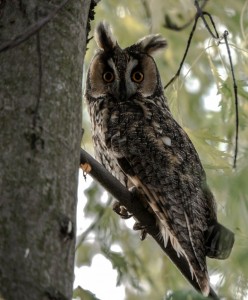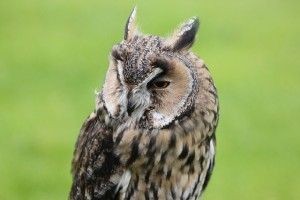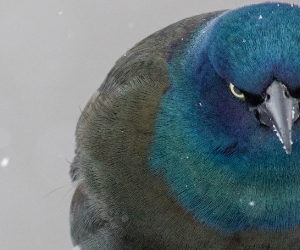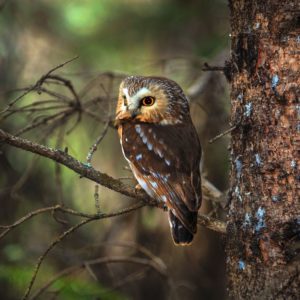And just ‘who’ is this?
The Long-Eared Owl is this month’s calendar photo! This owl is generally a medium-sized bird, who is approximately 38 cm in length with a 91 cm wingspread. Many people do not know that much about this bird, so outlined below is all the basics about the bird, plus some cool facts so check them out!
Distinguishing Features
- Ear-tufts are prominent at the centre of its head and mainly blackish-brown with tawny edges.

- Tawny-orange facial disk with blackish rim.
- Yellow-orange eyes.
- A white “X” across the face.
- The cere is brown.
- They have a grey-black beak.
- Plumage is brown and buff with heavy mottling and barring over most of the body.
Where do they live?
The Long-Eared Owl is found throughout temperate regions of the northern hemisphere. In Canada, you are likely to see this owl living in open woodland in the more southern regions. This bird prefers to nest and roost in dense coniferous thickets or trees with nearby open areas that they would use for hunting.
What does it eat?
These owls primarily eat small rodents, with voles being a favourite. As well, they eat small birds, lizards, frogs, snakes and bats!
Hunting Adaptation
Long-Eared Owls are stealth nocturnal hunters made possible by the following adaptations:
- Silent hunting made possible by flight feathers with fringed edges and downy surfaces that mute the sound of its passage through air.
- Large, rounded wings allow buoyant and effortless flying without too much flapping and loss of energy. This means they glide easily and fly slowly for long periods while hunting ground-dwelling prey.
- A highly developed auditory system, asymmetrically placed ear openings (ears are on the side, behind the eyes), and large, sound-catching facial disk make for precision night hunting.
- The position of the eyes gives the owl its “wise” appearance but more importantly for its hunting lifestyle binocular vision.

- In order to improve efficiency in low light the owl’s eye tubes, not balls, have large cornea, pupil and retina. The retina has more of the light-sensitive (rod) than the colour-sensitive (cone) cells.
What you may not have known. . .
- Females Long-Eared Owls are actually larger than the males.
- Plumage colouration provides excellent camouflage when roosting in dense foliage.
- They swallow their prey whole and then regurgitate the indigestible parts in pellets, and this usually happens once per day.
- They do not build their own nests but appropriate stick nests built in trees by crows and magpies.





